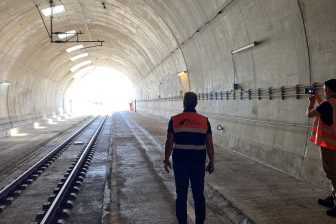
Swiss freight firm ‘tags’ wagon fleet
A major European freight supplier is to fit its entire fleet – around 5,000 wagons – with electromagnetic tags that will enable efficient tracking and improve safety. SBB Cargo is utilising technology made possible by the rapid rise of Radio Frequency Identifcation (RFID) in the cargo sector.
From activating an arrival alarm at journey’s end to tracking the wagons in ‘real time’ during travel, SBB says there are significant benefits to be had through the use of RFID, which uses electromagnetic waves to transmit information between the wagons and transponders along the route.
Reading system
Two tags are attached to every car, and the reading system indicates at what time a particular wagon has passed a certain point. It can also read what is transported, and can thus respond to different customers’ requirements. Some 1,000 wagons will be equipped with the tags by the end of the year, rising to 5,000 by December 2017.
SBB Cargo says that the development of RFID technology on its rolling stock and network is helping bring about a whole new logistics concept within the freight sector, and that it makes rail freight ‘technologically fit’ for the future demands of the market. SBB says this latest roll-out complements work it is being done in three areas:
Weighing technology
Firstly, ‘Asset Intelligence’ enables freight wagons to utilize new technologies. SBB Cargo currently has 150 wagons with temperature monitoring, and weighing technology on the tracks. Secondly, through ‘efficient manoeuvring and train formation’, the company is modernising shunting operations. Finally, ‘wayside intelligence’ – increasingly better known in the industry as WTMS (Wayside Train Monitoring Systems) – can identify wagons and check their condition from defined points on the network.
RFID is slowly, but surely, being adopted by rail providers all over the world, as a precise means of monitoring their rolling stock, to ensure fleets’ progress and their physical condition can be monitored from beginning to end. The first widespread commercial use of long-range RFID was for electronic toll collection in the USA, and its use in rail followed shortly after. It’s only recently however that European operators have started adopting RFID on a wider scale and are realising its benefits.





